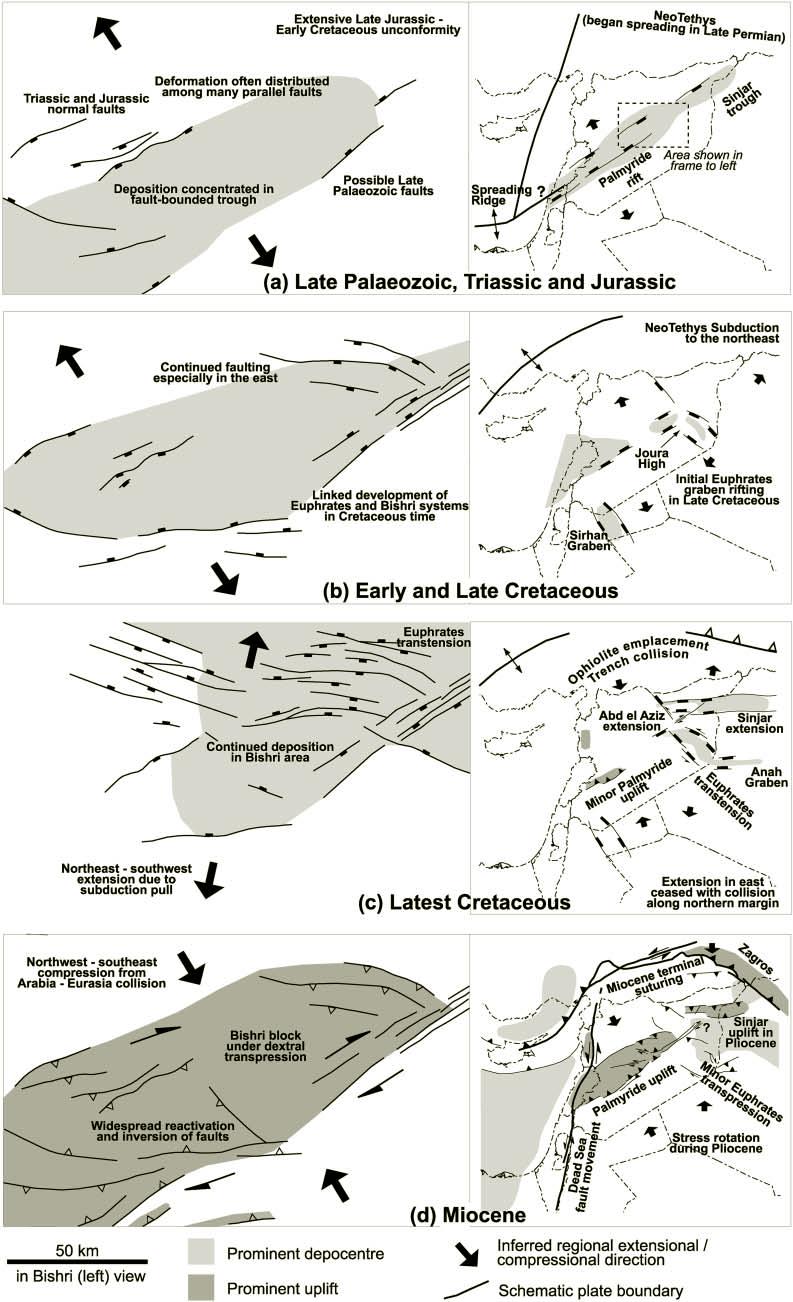Home |
Publications
Brew, G. E., Best, J., Barazangi, M., and Sawaf, T.
Tectonic evolution of the northeast Palmyride mountain belt, Syria: the Bishri
crustal block
Journal of the Geological Society, London 160, 677-685, 2003
Abstract
Investigating the Bishri block, centrally positioned
amid the diverse tectonic and structural zones of Syria, reveals details of the
intraplate Phanerozoic development of the northern Arabian platform. The Bishri
block is a broad northeast plunging inverted basin located at the northeast portion
of the Palmyride mountain belt where the mountains intersect the Euphrates fault
system. Well and seismic data show that subsidence and sedimentation in the Bishri
area was generally continuous from Carboniferous to Palaeocene time, with the
Bishri block part of the extensive Palmyride / Sinjar trough. Major bounding faults
and a rift-type environment are documented in the Permo-Triassic, Jurassic and
Cretaceous. The present Bishri structural and topographic high has been formed
through transpressive structural inversion since the Middle Miocene; high-angle
Mesozoic bounding normal faults now have net reverse offsets with a significant
dextral strike-slip component. East of the Bishri block, towards the Euphrates
fault system, north-northwest - south-southeast striking normal faults exhibit
less reverse movement. This deformation history correlates with the opening and
closing of the nearby NeoTethys ocean that has driven the evolution of the intracontinental
Syria.
Click
here to view the complete published PDF version of this paper
Copyright Statement
Copyright
© 2003 The Geological Society of London
This material has been published in The Journal of the Geological Society,
London 160, 677-685, 2003, the only definitive repository of
the content that has been certified and accepted after peer review. Copyright
and all rights therein are retained by the Geological Society of London.
Key Figures and Captions
Figure 5. Maps showing schematic tectonic evolution of the NE Palmyrides
(left) area and regional setting (right). Area shown at left for each time step
represents the area shown in Figure 2. Location and orientation of faults are
schematically illustrated together with areas of most deposition. The maps at
the right show a generalized plate tectonic setting of the northern Arabian
platform at each time step.

Home
| Publications

